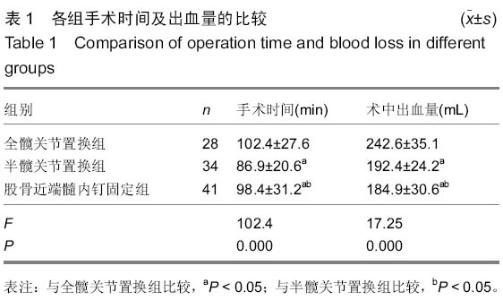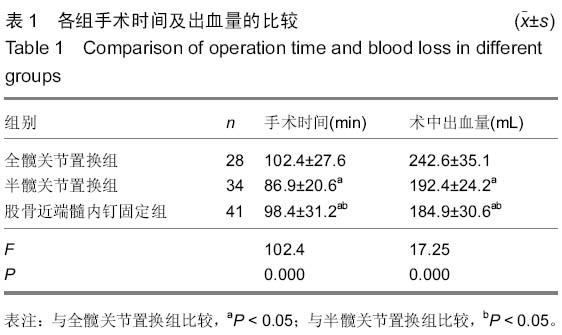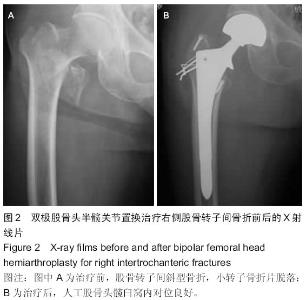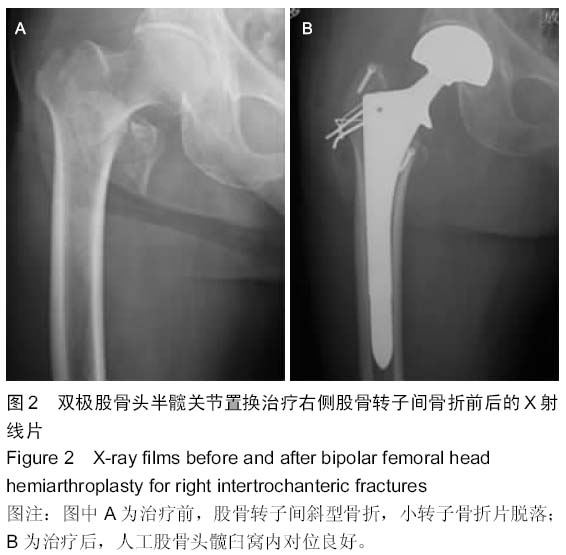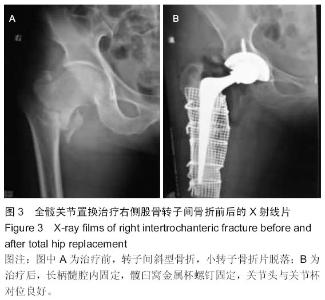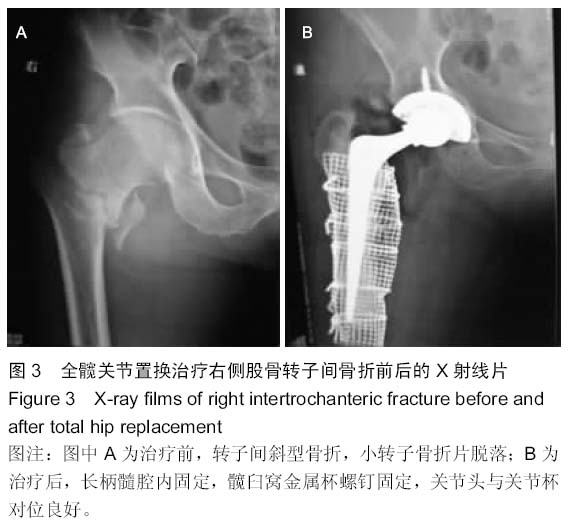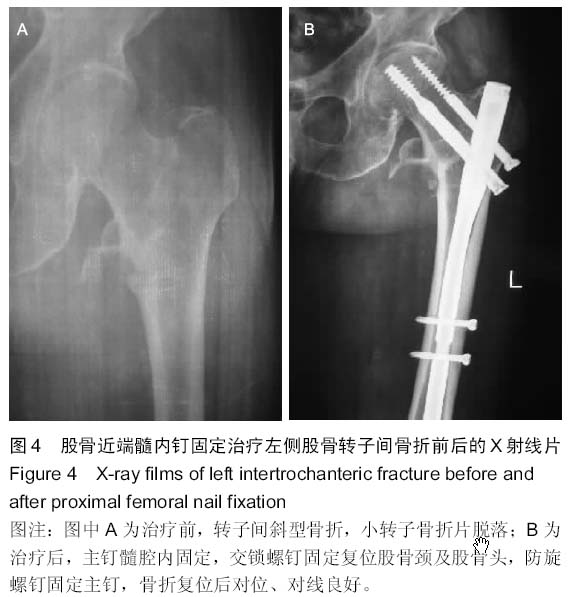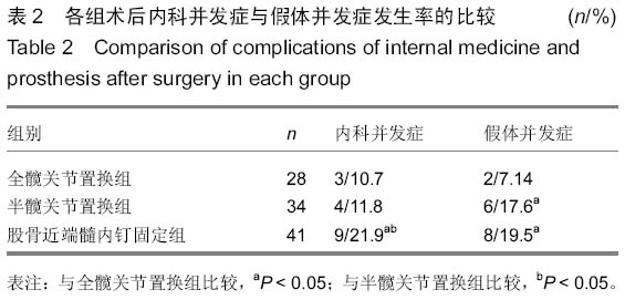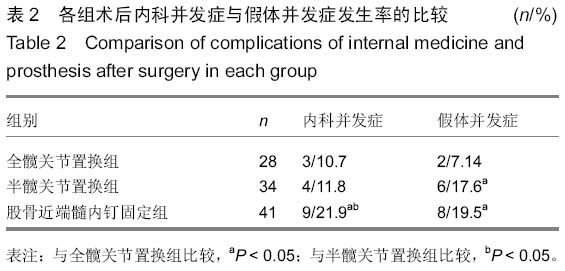| [1] 赵红莲,刘晓丽,冯向春,等.全髋关节置换术和半髋关节置换术治疗老年股骨颈骨折的疗效比较[J].中国老年学杂志,2014,34(23): 6671-6672 .
[2] 陈刚.曹怀焱.贺检.全髋关节置换术治疗老年股骨颈骨折 48 例临床分析[J].中国医药导报,2012,9(14):178-181.
[3] 邓海源.PFN 钉置入内固定与人工股骨头置换治疗高龄股骨转子间骨折的比较[J].中国组织工程研究与临床康复,2011,15(17): 3075-3078 .
[4] 易先宏,陈红卫,潘骏.动力髋部螺钉与股骨近端髓内钉固定不稳定股骨转子间骨折的生物力学比较[J].医用生物力学,2013, 28(2): 238-239.
[5] 吴晗,张鉴,李 强,等.防旋髓内钉与锁定钢板置入修复高龄股骨转子间不稳定骨折:髋关节功能比较[J].中国组织工程研究, 2015,19(22):3550-3554.
[6] 韩俊柱,尹宗生,耿春辉,等.治疗股骨转子间骨折的相关并发症及对策[J].重庆医科大学学报,2011,36(6):762-764.
[7] 邵珠省.人工关节置换与髓内钉系统治疗老年股骨粗隆间不稳定骨折疗效及并发症对比研究[J].中国农村卫生,2015,4(8):75.
[8] 沈小军.全髋关节置换术治疗老年股骨颈骨折疗效观察[J].新乡医学院学报,2015,32(1):59-61.
[9] 吴梅祥,白波,钱东阳,等.高龄老年人股骨颈骨折人工全髋与半髋关节置换术的选择[J].中华关节外科杂志(电子版),2009,3(3): 315-319.
[10] 叶起新.股骨转子间不稳定性骨折应用股骨距重建后半髋关节置换术的临床研究[J].临床医学,2015,35(6):52-53.
[11] 郑连生,向保国,林浩.全髋关节置换术与半髋关节置换术治疗股骨颈骨折的近期临床疗效研[J].究中国医学前沿杂志9电子版), 2014,6(10):62-64.
[12] 张子玉,姜晓峰,曹立新,等.人工髋关节置换术治疗高龄股骨粗隆间骨折的临床疗效[J].齐齐哈尔医学院学报,2014,35(22): 3348-3349.
[13] 宋德煌,周雄清,汤福来.全髋关节置换术和半髋关节置换术治疗老年股骨颈骨折56例临床疗效比较[J].吉林医学,2015,36(13): 2764-2765
[14] 李健民.髋关节置换术治疗高龄不稳定型股骨转子间骨折的临床效果分析[J].中国当代医药,2015,22(13):91-93,97.
[15] 牛存良.双动半髋关节置换及全髋关节置换修复高龄转子间骨折的对比[J].中国组织工程研究,2015,19(22):3482-3486.
[16] Waddell JP,Morton J,Schemitach EH.The role of total hip replacement interrochanteric fracture of the femur.Clin Orthop.2004;429(10):49-53.
[17] 张永涛,王春生,王坤正,等.转子间重建并关节置换术治疗老年人不稳定转子间骨折的疗效分析[J].西安交通大学学报:医学版, 2013,34(2):272-274.
[18] 张成敏,陈世荣.生物型加长柄治疗高龄不稳定转子间骨折[J].中国中医骨伤科杂志,2013,21(4):38-39,41.
[19] 李海燕.PFN内固定与人工股骨头置换术治疗老年股骨粗隆间骨折临床研究[J].中国医药导报,2012,9(2):43-44.
[20] 唐朴勤,周雪松,陈晓婷,等.人工股骨头置换与全髋关节置换在治疗老年股骨颈骨折中的疗效比较[J].武汉大学学报:医学版, 2014,35(1):113-115.
[21] 孙虎峰,王亚军,赵凡.PFN与DSH治疗不稳定粗隆间骨折的疗效比较[J].中国老年学杂志,2013,1(33):158-159.
[22] 叶冬平,李锋生,梁伟国,等.半髋关节置换与PFN内固定治疗高龄不稳定型股骨粗隆间骨折的疗效比较[J].中国矫形外科杂志, 2009,17(18):1371-1373.
[23] 田勇,陈富.股骨颈骨折后伴下肢深静脉血栓形成的治疗探讨[J].检验医学与临床,2011, 8(1):24-26.
[24] 谭加群,梁江声,李建赤,等.预防髋关节周围骨折深静脉血栓形成的临床研究[J].中华关节外科杂志(电子版),2011,5(2):137-142.
[25] 李坤,宋波.人工股骨头置换术与全髋关节置换术治疗老年股骨颈骨折临床效果比较[J].实用临床医药杂志,2013,17(3):45-48.
[26] 舒本林.半髋关节置换治疗老年不稳定股骨转子间骨折的临床应用[J].医学综述,2014,20(24):4592-4594.
[27] 潘晓华,肖德明,林博文,等.动力髋部螺钉(DHS)和股骨近端髓内钉PFN治疗老年股骨转子间骨折的疗效分析[J].中华创伤骨科杂志,2004,6(7):785-794.
[28] 胡国东,赵福龙,王雪飞,等.PFN与InterTan内固定治疗股骨粗隆间骨折的比较研究[J].中国骨与关节病杂志,2013,28(6): 512-513.
[29] 吴小山,季卫平,孙勇飞,等. PFN与PFNA治疗股骨粗隆间骨折76例分析[J].浙江创伤外科,2015,20(3):532-534.
[30] 杨振伟.股骨近端髓内钉(PFN)治疗老年股骨转子间骨折的疗效分析[J].中国现代医生,2015,53(9):44-45,49.
[31] 谭云,许将兴,陈乾刚,等.IMHS和PFN治疗股骨转子间骨折的生物稳定性比较[J].西南国防医药,2014,24(7):732-735.
[32] 韦汉鹏,梁再卿,林伟良,等.人工髋关节置换、DHS和PFN治疗老年股骨转子间骨折的临床对比研究[J].现代中西医结合杂志, 2015, 24(13):1441.
[33] 叶成,董建文.长柄人工双动股骨头置换DHS及PFN治疗高龄患者股骨粗隆间骨折的对比研究[J].临床医学,2013,33(9):14-17.
[34] 唐跃先人工全髋关节置换术和股骨头置换术治疗老年股骨颈骨折的疗效分析[J].重庆医学,2010,39(6):727-728.
[35] 樊满武.老年股骨颈骨折全髋及半髋关节置换对比分析[J].基层医学论坛,2015,19(18): 2474-2475.
[36] 宋德煌,周雄清,汤福来.全髋关节置换术和半髋关节置换术治疗老年股骨颈骨折56例临床疗效比较[J].吉林医学吉林医学,2015, 36(13):2764-2765.
[37] 邢少华,邢永军,刘增亮,等.双动股骨头置换术和髋关节置换术治疗股骨颈骨折的综合比较[J].河北医学,2015,21(9):1449-1452.
[38] 黄炎,孔荣,方诗元,等.人工全髋关节置换术后脱位的原因分析和防治对策[J].中国矫形外科杂志,2009,17(5):333-335.
[39] 李国威,董明岩,张海飞,等.全髋关节置换与双极人工股骨头置换治疗老年股骨颈骨折的 Meta 分析[J].中国组织工程研究与临床康复,2011,15(22):4061-4064.
[40] 李健民.髋关节置换术治疗高龄不稳定型股骨转子间骨折的临床效果分析[J].中国当代医药,2015,22(13):91-93,97.
[41] 牛存良.双动半髋关节置换及全髋关节置换修复高龄转子间骨折的对比[J].中国组织工程研究,2015,19(22):3482-3486. |
